Understanding the Lutino Cockatiel: A Comprehensive Guide
Dive into a detailed guide about Lutino Cockatiels: their unique traits, care needs, and behaviors. Learn to understand your feathered friend

Key Takeaways:
- Lutino cockatiels are a popular color mutation known for their striking white plumage and red eyes.
- Proper care for lutino cockatiels includes a balanced diet, appropriate cage size, and regular interaction. Ensuring the correct cage size with suitable dimensions and bar spacing is crucial for their well-being.
- Recognizing the differences between male and female lutinos can help owners provide better care and breeding conditions.
Lutino cockatiels are a captivating variety of one of the most beloved pet birds in the world. With their vibrant yellow feathers and contrasting red eyes, they stand out in the avian world as a testament to the beauty of genetic variation. This comprehensive guide will delve into the world of lutino cockatiels, offering insights into their behavior, care, and breeding.
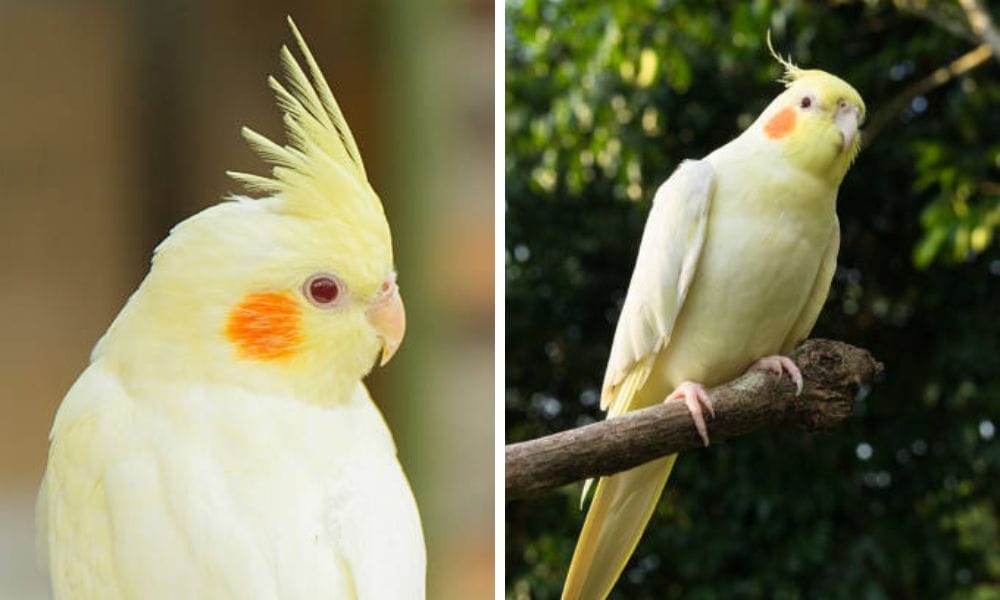
What is a Lutino Cockatiel?
A Lutino Cockatiel is a captivating color mutation of the cockatiel species, renowned for its striking appearance. These birds are characterized by their white to light-yellow feathers, which create a beautiful contrast with their stunning orange cheek patches. The Lutino Cockatiel’s unique coloration results from a genetic mutation that affects melanin production, leading to a lack of pigmentation. This distinctive look makes this cockatiel a highly sought-after pet among bird enthusiasts, adding a touch of elegance to any aviary. The lutino cockatiel mutation was the second cockatiel mutation to be established in the United States .
Origin and History of Lutino Cockatiels
The cockatiel mutation has an interesting history that dates back to the mid-20th century. It was first discovered in 1958 by Cliff Barringer in Miami, Florida, making it the second established cockatiel mutation in the United States, following the pied mutation in 1951. Since its discovery, the Lutino Cockatiel has gained immense popularity among bird breeders and pet owners alike. This mutation is a domesticated variant of the gray cockatiel, which is native to Australia. Over the years, Lutino Cockatiels have become a beloved addition to the pet bird community, admired for their unique beauty and charming personalities.
Physical Characteristics of Lutino Cockatiels
Lutino Cockatiels are easily recognizable due to their distinctive physical traits. They boast white to light-yellow feathers that give them a soft, ethereal appearance, complemented by their stunning orange cheek patches. These medium-sized birds typically measure around 12 inches (30-33 cm) in length and weigh between 75 to 125 grams. Their average wingspan ranges from 30 to 35 cm, and they have long tail feathers that make up roughly half their total body length. As members of the parrot family, Lutino Cockatiels have a characteristic beak shape, and their eyes are usually orange or yellow, adding to their overall allure.
The Lutino Mutation: A Glimpse into Avian Genetics
The lutino cockatiel is the second cockatiel mutation to be discovered, first bred by Cliff Barringer in the 1950s. This mutation is characterized by a lack of melanin, resulting in the bird's white plumage and yellow coloring. The lutino gene is responsible for this striking appearance, and it operates in a manner that is similar to albinism in other species. However, unlike true albinos, lutino cockatiels still retain some pigmentation, which is evident in their yellow coloring and the orange cheek patches that are a hallmark of the species.
Lutino cockatiels are often mistaken for albino cockatiels, but there is an obvious difference between the two. Albinos have a complete lack of pigment, which results in pure white feathers and red eyes, while lutinos display a mix of white and yellow plumage. This color mutation has become increasingly popular among aviculture enthusiasts and is now one of the most commonly bred variations of cockatiels.
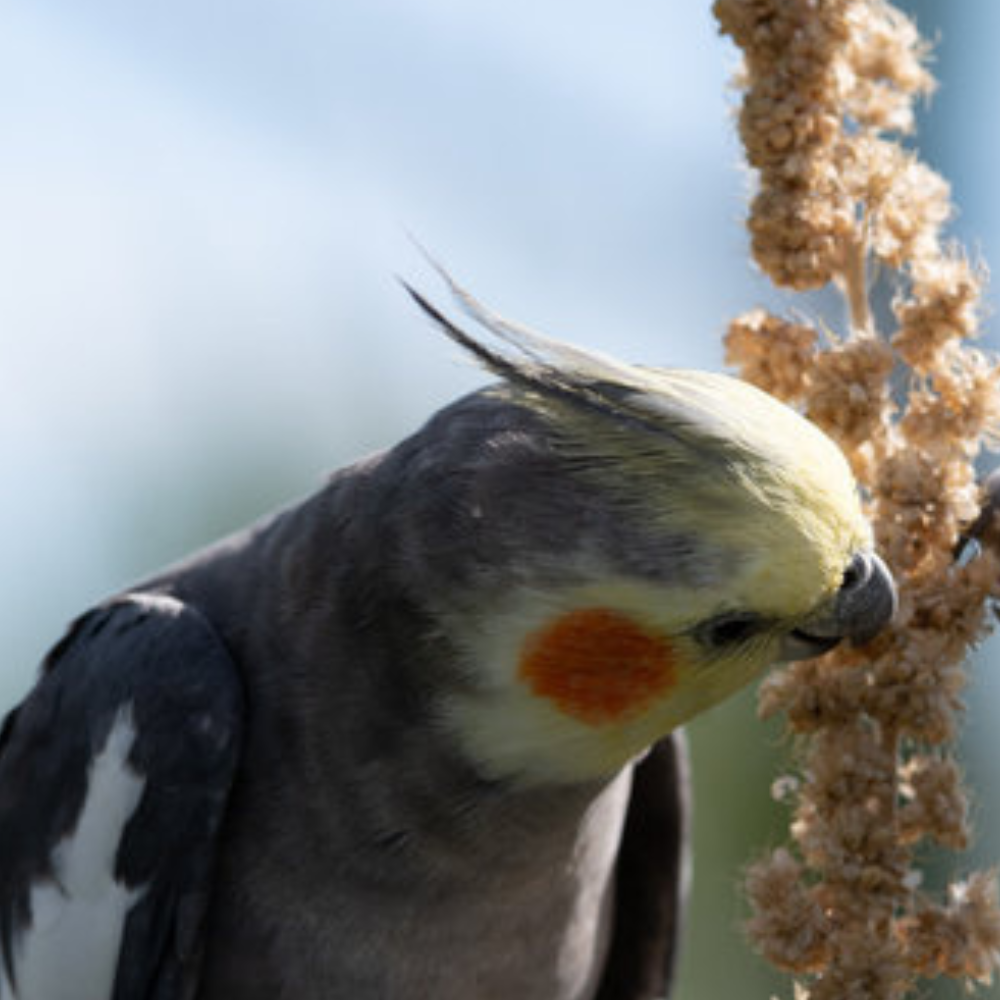
Caring for Your Cockatiel: Diet, Housing, and Health
When it comes to caring for lutino cockatiels, there are several key factors to consider to ensure they lead a healthy and happy life. First and foremost, their diet should consist of a variety of seeds, pellets, and fresh fruits and vegetables. It’s important to provide a mix that caters to their nutritional needs, as smaller birds like cockatiels can suffer from deficiencies if fed an imbalanced diet. Regularly offering foods like leafy greens, berries, and other vitamin-rich foods can help maintain their vibrant feathers and overall well-being.
Baby cockatiels, in particular, display certain visual characteristics such as clear barring, which can aid in sexing the birds before they reach maturity. Proper care and nutrition are crucial during this stage to ensure healthy development.
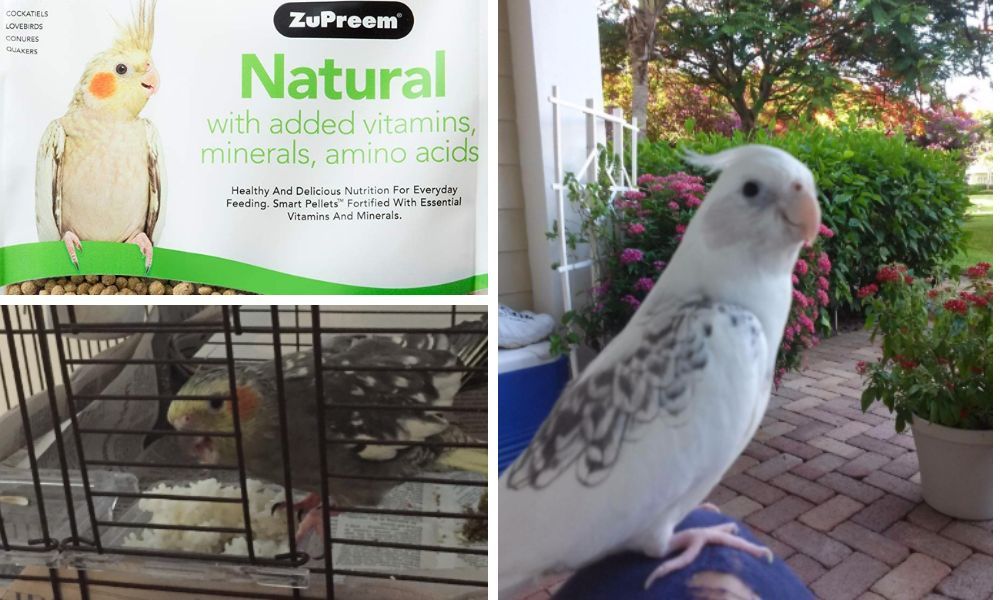
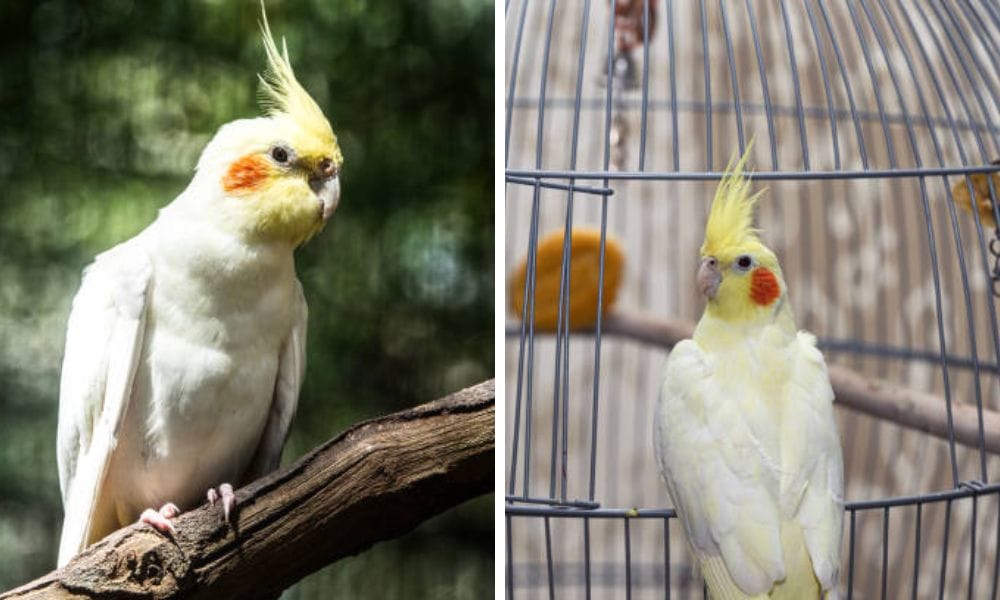
Housing is another critical aspect of cockatiel care. These birds require a cage that is spacious enough to allow for free movement and wing flapping. The cage should be equipped with perches of varying sizes to promote foot health, as well as toys to keep them entertained. Lutino cockatiels, like other parrots, are intelligent and inquisitive, so providing mental stimulation through toys that encourage foraging and problem-solving is essential. Items such as bells, ropes, and ladders can keep them engaged and prevent boredom.
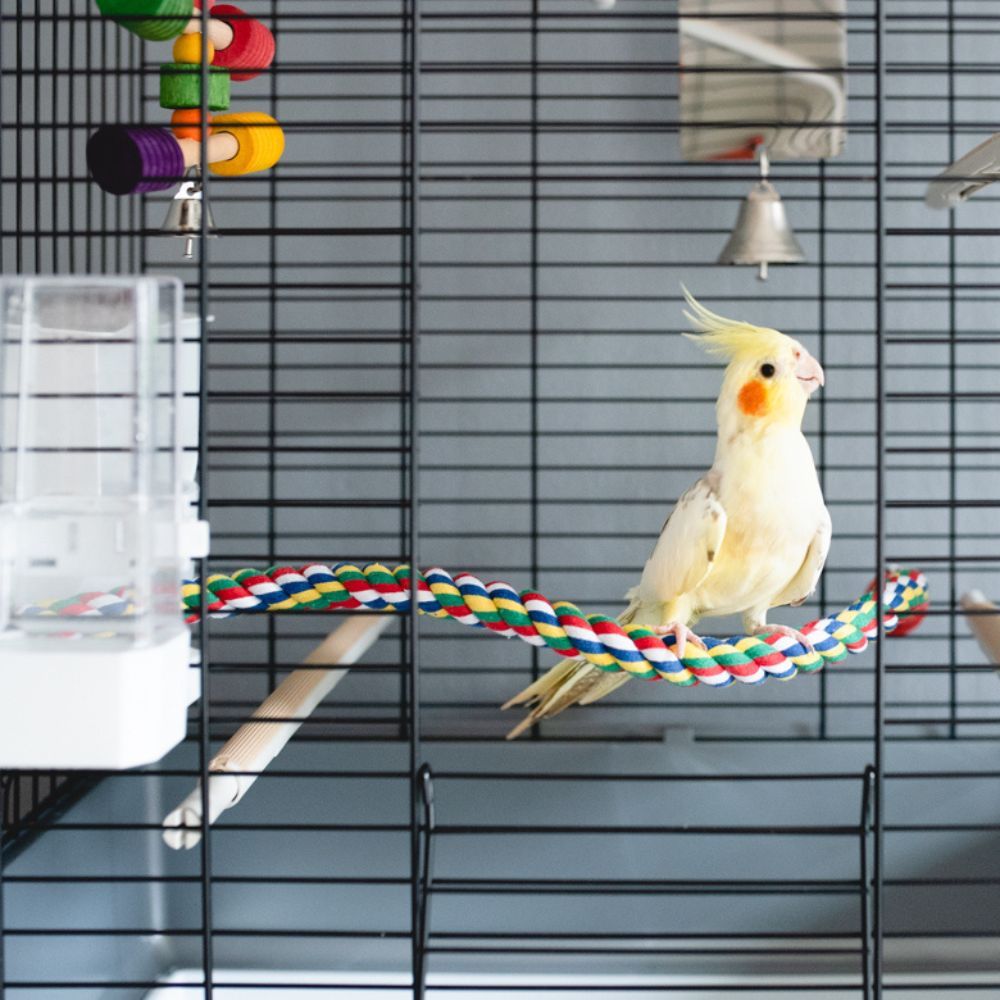
The Fascinating World of Color Mutations in Cockatiels
When you’re a first-time bird owner, the variety of color mutations in cockatiels can be both fascinating and overwhelming. Among the most popular are the pied, cinnamon, and pearl varieties, each with their unique patterns and hues. The pied mutation results in a bird with an irregular pattern of colored and white feathers, often leading to a striking appearance. Cinnamon cockatiels, on the other hand, have a warm, brownish hue to their feathers, while pearls are characterized by their scalloped feather pattern, which resembles a string of pearls.
The whiteface mutation is another rare and sought-after trait in cockatiels. It eliminates the yellow and orange pigments in the bird’s feathers, resulting in a sleek, monochromatic appearance. This mutation can occur in combination with others, such as pied or pearl, creating even more unique and beautiful birds. For those interested in the genetics behind these color mutations, it’s a captivating subject to watch and study. Each mutation is a testament to the breed’s diverse genetic tapestry, making cockatiels not just pets but living art.
Female cockatiels can often be identified by the yellow spots on their flight feathers, which become visible around seven weeks of age. These spots are a key characteristic for determining whether the bird is male or female.
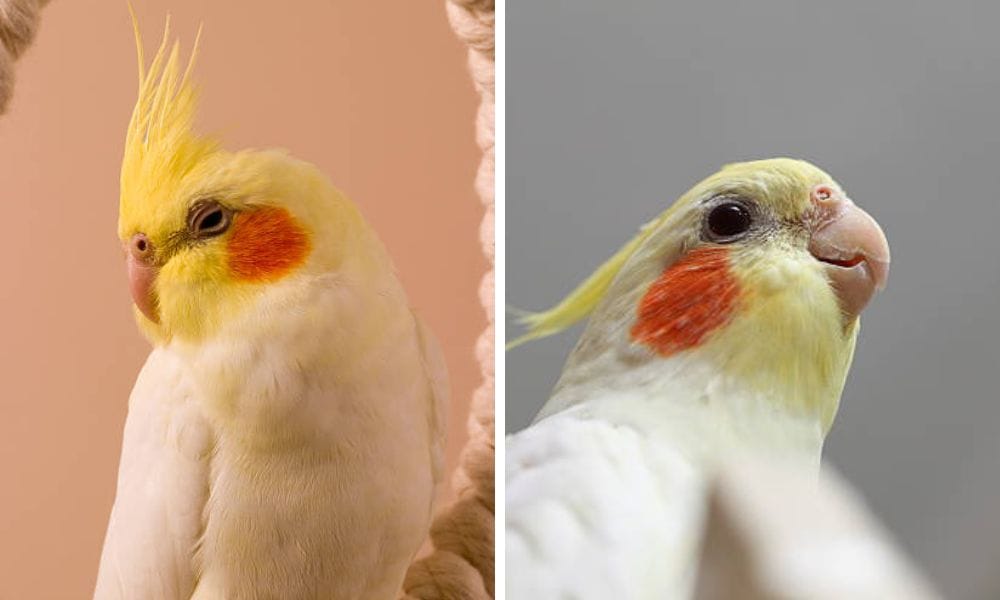
Training and Bonding with Your Lutino Cockatiel
Training your cockatiel can be a rewarding experience for both the bird and the owner. With patience and consistency, you can train your feathered friend to perform various tricks, respond to their name, and even learn to talk. These intelligent birds can mimic a few words and phrases through diligent training. The key is to start with simple commands and use positive reinforcement, such as offering fruit or other treats as a reward. It’s important to train in a quiet environment where your bird won’t get distracted, and to keep sessions short, especially in the beginning. Just a few minutes a week can make a significant difference.
Bonding with your cockatiel also involves understanding and responding to its social needs. Cockatiels are social creatures that thrive on interaction. Spend time each day with your bird out of its cage, allowing it to explore and fly safely. Watch for signs of affection, such as a raised crest or a desire to be close to you, which indicate that your bird is interested in bonding. Remember, every cockatiel has its personality, and building trust takes time. But once you’ve caught the heart of your Lutino, you’ll have a loyal and entertaining companion for years to come.
Understanding Cockatiel Behavior and Social Needs
Lutino cockatiels, much like their wild grey counterparts, are social creatures that thrive on interaction. They are known for their friendly disposition and can become quite attached to their owners. Regularly spending time with your lutino cockatiel, whether it’s through training sessions or simply watching them play, can help strengthen the bond between bird and owner. These birds are also known for their vocal abilities; males, in particular, tend to whistle and chirp more frequently and can even learn to mimic sounds and talk.
When considering adding a second cockatiel to your family, it’s important to introduce the birds slowly to ensure they get along. Lutino cockatiels can be territorial, especially during breeding season, so monitoring their behavior towards each other is crucial. Additionally, lutino cockatiels benefit from interaction with other birds, as living alone may lead to behavioral issues. Providing a stimulating environment that includes regular socialization with both humans and other birds is essential for their well-being. If you’re a first-time bird owner, it’s advisable to start with one bird and learn about its care and behavior before introducing another.
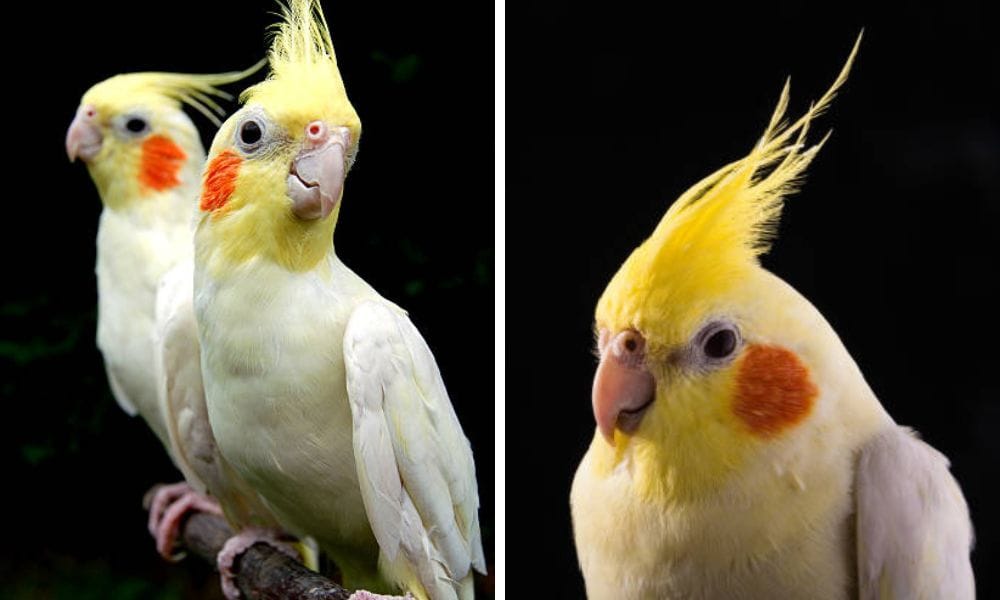
Lutino Cockatiel Syndrome
Lutino Cockatiel Syndrome is a genetic condition that owners and breeders should be aware of. This syndrome is characterized by several signs, including bruising or bleeding wing tips, abdomen, and pectoral muscles, as well as a tendency to be prone to trauma and falling. The condition often arises from genetic issues, primarily due to overbreeding. To prevent Lutino Syndrome, it is crucial to ensure regular veterinary check-ups and provide a balanced diet rich in essential nutrients. By taking these preventive measures, owners can help maintain the health and well-being of their Lutino Cockatiels, ensuring they lead happy and healthy lives.
Breeding Lutino Cockatiels: From Nest Box to Fledgling
Breeding lutino cockatiels can be a rewarding experience, but it requires a good understanding of their needs. A proper nest box is essential for a breeding pair, as it provides a safe and comfortable place for the female to lay her eggs. The box should be placed in a quiet corner of the cage to offer privacy. It's also important to ensure that the breeding pair is healthy and of breeding age. A diet rich in calcium and other nutrients is crucial during this time to support egg production and the health of the chicks
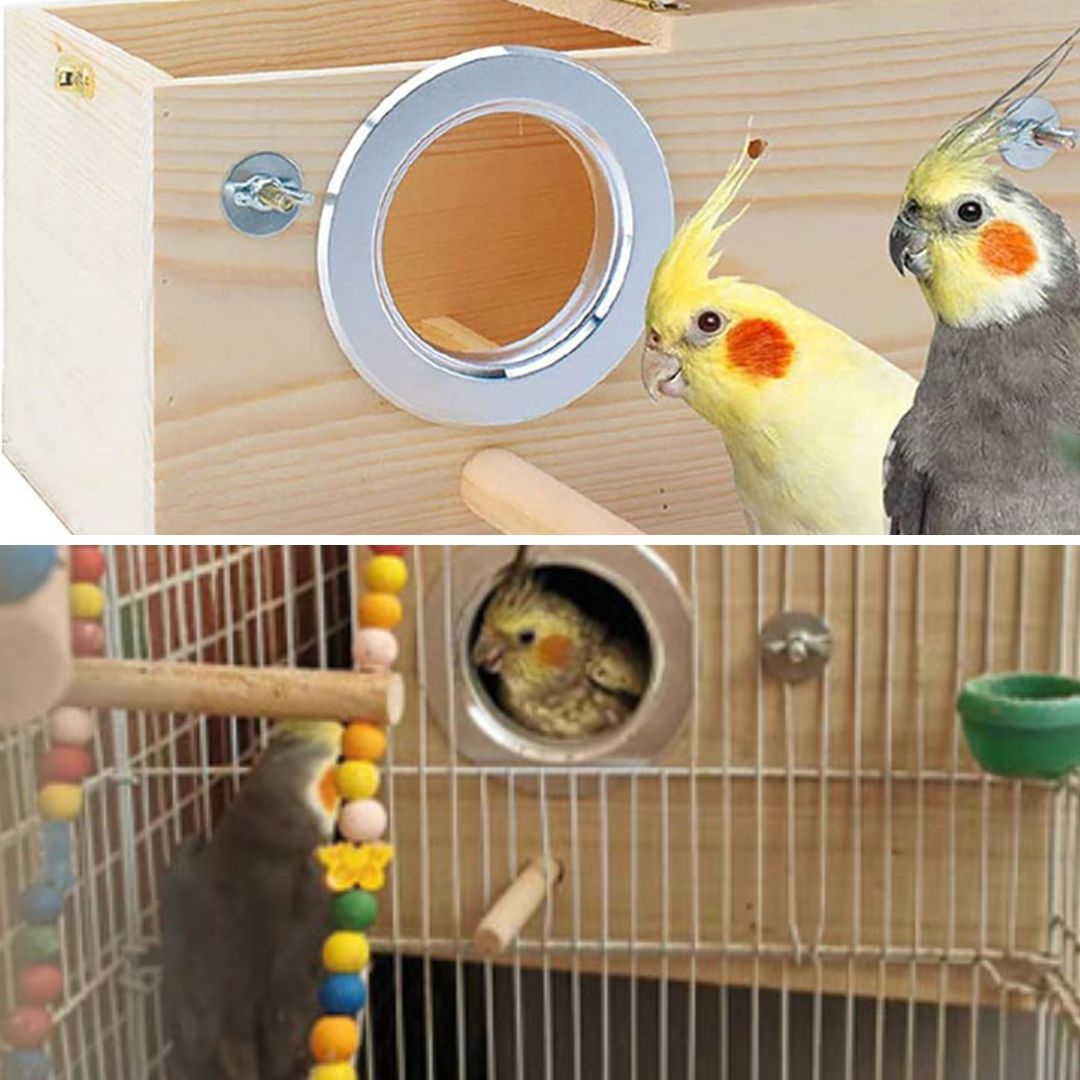
Once the eggs are laid, it typically takes about 18-21 days for them to hatch. During this period, the male cockatiel may become more protective of the nest and may exhibit more aggressive behavior. It's important to give the breeding pair space and minimize disturbances to prevent stress. After the chicks hatch, they will depend on their parents for food and warmth until they are ready to leave the nest, usually around 4-5 weeks of age.
Summary
Lutino cockatiels are a stunning and popular variant of the cockatiel species, known for their white and yellow plumage and red eyes. Understanding the lutino mutation helps appreciate the uniqueness of these birds. Proper care for lutino cockatiels involves a balanced diet, appropriate housing, and regular interaction to keep them healthy and socially engaged. Breeding lutino cockatiels can be a fulfilling endeavor if done responsibly, with attention to the birds' health and environmental needs.
FAQ Section
Q: How can I tell the difference between a male and female lcockatiel? A: Male lutino cockatiels tend to have brighter yellow coloring and are more vocal, often whistling and chirping. Females may have a more subdued hue and are generally quieter. The male's behavior can also be a sign, as they are more likely to display courtship behaviors such as head bobbing and wing flapping.
Q: What is the best diet for a lutino cockatiel? A: A lutino cockatiel's diet should include a mix of high-quality seeds, pellets, and a variety of fresh fruits and vegetables. Foods rich in vitamins and minerals, such as leafy greens and berries, are particularly beneficial. It's important to avoid foods that are toxic to birds, such as avocado, chocolate, and caffeine.
Q: How often should I interact with my lutino cockatiel? A: Daily interaction is recommended for lutino cockatiels, as they are social birds that crave companionship. Spending time each day playing, training, or simply being in the same room can help keep your cockatiel mentally stimulated and emotionally satisfied. Regular interaction also helps to build trust and strengthen the bond between you and your pet.

